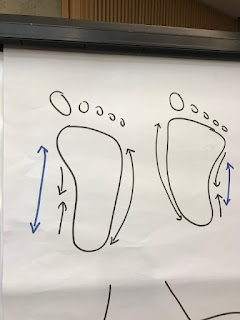 |
| Kids stretching before gong fu classes |
Here's another interesting thought. Does stretching makes one more flexible because repeated stretching alters the mechanical properties of the muscles, tendons and joints you are stretching?
Or stretching causes you and your muscles to tolerate more tension when you stretch? You become more flexible or can reach further because your brain tells you that you can and not because you've altered the mechanical properties in the joint.
This was exactly what researchers were wanting to know when they pooled data from 26 studies that measured the mechanical properties of the joint, muscles and tendons after stretching programs of between three to eight weeks.
Participants in those 26 studies stretched at least twice a week, average total stretching time slightly less than 20 minutes each week.
I was surprised (and I'm sure you'll be too) when the results appear to support the second theory as only very small changes were seen in the mechanical properties measure. Participants did get more flexible and were willing to tolerate greater tensile forces while stretching.
Bear in mind that the stretching period was only eight weeks. The authors point out that weight training over similar duration show increase in neuromuscular strength gains but no change in size of the actual muscles. The same may be true for stretching, neural changes first followed by physical changes.
Some readers will undoubtedly say that don't worry about whether is the the physical muscle changing or neural changes. As long as flexibility improves.
As written earlier, we do not know for sure if stretching improves your sporting performance or helps prevent injuries, but the general consensus is that regular stretching may be beneficial in the long term.
Reference
Freitas SR, Mendes B et al (2017). Can Chronic Stretching Change The Muscle-tendon Mechanical Properties? A Review. Scan J Med Sci Sports. DOI: 10.1111/sms.12957










